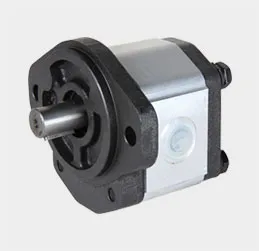Exploring Innovations in Plastic Die Casting Technologies for Enhanced Manufacturing Efficiency
Exploring Plastic Die Casting An Innovative Manufacturing Process
In the world of manufacturing, precision and efficiency play crucial roles in determining the success and cost-effectiveness of production techniques. One such process that has gained traction in recent years is plastic die casting. This method is particularly notable for its capacity to produce high-quality plastic parts with intricate designs, making it a preferred choice for various industries, including automotive, electronics, aerospace, and consumer goods.
What is Plastic Die Casting?
Plastic die casting is a manufacturing process used to produce parts by injecting molten plastic into a mold. The molds, or dies, are typically made of steel or aluminum and are designed to create parts of specific shapes and sizes. Once the plastic cools and solidifies, the mold is opened, and the finished part is ejected. This process allows for the efficient mass production of highly detailed components with smooth surfaces and dimensional accuracy.
One of the most common types of plastic die casting is known as thermoplastics injection molding, where the material is heated until it becomes molten and can be easily injected into the mold. Thermoplastics are favored due to their versatility, ability to be remolded, and resistance to various chemicals and impacts.
Advantages of Plastic Die Casting
1. High Precision and Quality One of the most significant advantages of plastic die casting is its ability to produce parts with exceptional accuracy. The precise control over the injection process allows for tight tolerances, resulting in parts that fit together seamlessly.
2. Rapid Production Cycle The die casting process is highly efficient, making it suitable for large-scale production. The quick cooling time of plastics means that production cycles are often shorter than traditional methods. This efficiency leads to reduced production costs and faster time to market.
3. Complex Geometries Plastic die casting facilitates the production of complex and intricate shapes that may be difficult or impossible to achieve with other manufacturing techniques. This capability opens up new design possibilities for engineers and designers, allowing them to create innovative products.
4. Material Versatility With a wide range of thermoplastic materials available, manufacturers can choose the ideal plastic for their specific application. This versatility means that different mechanical and thermal properties can be achieved according to the requirements of the final product.
plastic die casting

5. Minimized Waste The die casting process generates minimal waste compared to other manufacturing methods. Excess material can often be reclaimed and reused, further reducing the environmental impact of the production process.
Applications of Plastic Die Casting
Plastic die casting finds its applications across various industries, providing solutions for numerous challenges faced by manufacturers
.- Automotive Industry The automotive sector utilizes plastic die casting to produce components like dashboards, trim pieces, and under-the-hood parts. The lightweight nature of plastic helps improve fuel efficiency while offering durability and resistance to environmental stressors.
- Electronics In the electronics domain, plastic die casting is employed to manufacture housings for devices, connectors, and other components that require both precision and aesthetics. The dielectric properties of certain plastics also make them suitable for electrical applications.
- Consumer Products The versatility of plastic die casting allows for the production of everyday items, such as kitchen appliances, toys, and sporting goods. The ability to create complex shapes and designs makes it possible to develop innovative products that meet consumer demands.
Challenges and Considerations
While plastic die casting offers many advantages, it is not without its challenges. The initial cost of creating molds can be significant, making it essential for manufacturers to assess their production volumes and project requirements. Additionally, factors such as material selection, mold design, and cooling rates must be carefully considered to ensure optimal outcomes.
Conclusion
Plastic die casting is a forward-thinking manufacturing process that merges precision, efficiency, and design flexibility. With its myriad advantages and broad applications, it continues to shape the future of manufacturing across various sectors. As technology advances and materials evolve, this method is likely to become even more pivotal in producing innovative and sustainable products for diverse industries. Embracing plastic die casting not only enhances manufacturing capabilities but also drives the creation of competitive solutions in an ever-evolving marketplace.
-
Technocrats Die Casting Solutions – Precision Hot & Cold Chamber Die Casting ExpertsNewsJun.24,2025
-
Precision Glass Machining Solutions Sand Casting Glass & Abrasive Water Jet Machining ExpertsNewsJun.24,2025
-
Top Extras Casting Solutions Die Casting and Sand Casting Experts High-Quality Casting and Die Casting ServicesNewsJun.10,2025
-
Top SS Casting Manufacturer Aluminum Die Casting Manufacturer China Precision Die Casting Company SupplierNewsJun.10,2025
-
High-Quality Brass Casting Sand for Precision Sand Casting Brass at HomeNewsJun.10,2025
-
Affordable Aluminum Sand Casting Solutions Custom PartsNewsJun.09,2025















